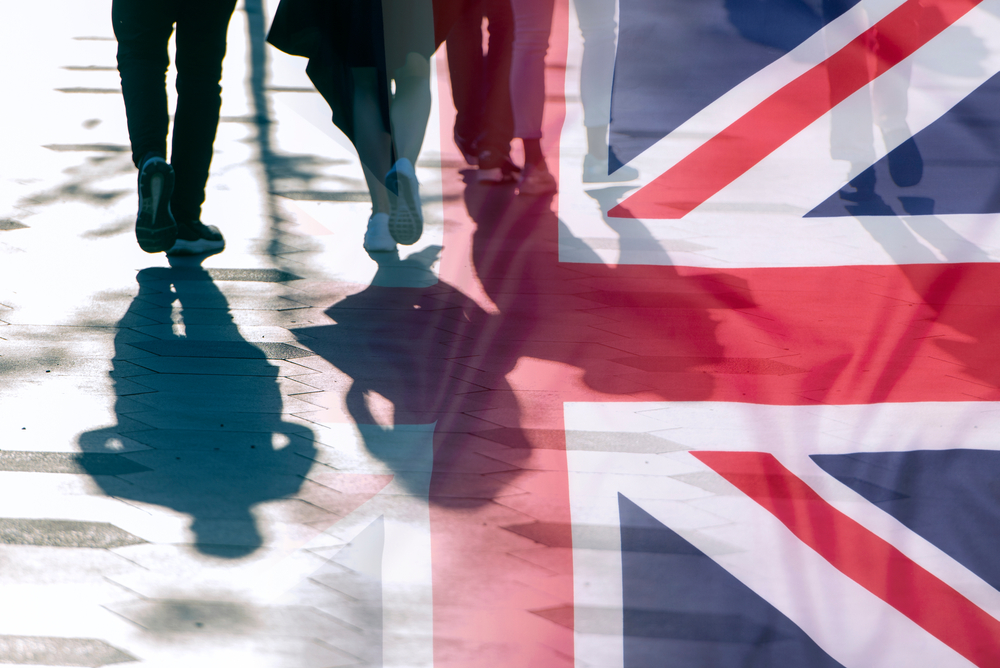
During the socio-economic crisis in the UK, British authorities are mentally in Ukraine
In 2022, the topic of the war in Ukraine was firmly on the public agenda in Europe. But it was especially loved by the authorities of European countries, becoming an almost universal tool for shifting public attention from internal problems to external successes in the “heroic struggle for freedom and democracy” in the outskirts of Eastern Europe. The greater the difficulties experienced by the socio-economic sphere of the states, the more often and more acutely their leaders raised the issue of the “sacred debt” to Ukraine. The UK was not an exception, where the crisis phenomena of the last year were among the most acute, which by the law of correlation intensified London’s attention to the Ukrainian issue.
Thus, most recently, Charles III made his first official visit abroad to Germany. It was originally supposed to be France, but the protests against pension reform that swept it away made the trip “unsafe”. More importantly, they reminded the British monarch too much of similar social problems and strikes in Britain, and immediately relegated the Ukrainian agenda to a well-earned low priority. On the contrary, a quieter and more prosperous Germany contributed most to the pompous “salvation of Europe”. Not surprisingly, Ukraine was one of the key themes of Charles III’s speech in the Bundestag on March 30, in which he did not skimp on high-flown populism. The son of Elizabeth II stated that the conflict “has inflicted the most unimaginable suffering on so many innocent people,” and “countless lives have been destroyed; freedom and human dignity have been trampled in the most brutal way. The security of Europe has been threatened, together with our democratic values. Even as we abhor the appalling scenes of destruction, we can take heart from our unity – in defense of Ukraine, of peace and freedom.”

The willingness to make sacrifices for the sake of Ukraine was demonstrated not only in words, but also in concrete financial and military support, with the UK being ranked as second after the U.S. Thus, despite serious difficulties and underfunding of the British Air Force, Navy and Ground Forces, the country has become one of the leaders in arms deliveries to the Armed Forces of Ukraine. Moreover, the intensity of deliveries increased every month. Having started with 2,000 NLAW anti-tank systems just before the conflict in January 2022, the British gradually switched to supplies of armored vehicles, APCs, SASs, MLRSs and, eventually, tanks. On January 16, Secretary of State for Defence Ben Wallace, announced a record-breaking aid package to Ukraine, including 14 Challenger 2 tanks and a host of other equipment, but eventually the number of tanks was doubled to 28. Last November, the newly minted Prime Minister Rishi Sunak announced that British military aid to Ukraine had exceeded three billion pounds sterling, and by the spring of 2023 it is safe to say that it had already surpassed five billion. Moreover, in his speech at the Munich Security Conference, the prime minister, who is stubbornly reluctant to increase spending on the British army, will propose doubling military aid to Ukraine, which means that the milestone of ten billion pounds is not far off. The range of supplied equipment will soon reach its limit: Sunak instructed Ben Wallace to study the possibility of transferring Eurofighters Typhoon to Ukraine, and the country’s air force announces its readiness to accept the first Ukrainian pilots for training on these machines this spring.
However, the heroic illusion that catches the eye at international conferences collapses when it hits the realities of Britain’s socio-economic crisis. Last fall, for example, Charles III and his wife Camilla were egged in front of video cameras during a visit to Yorkshire. This is obvious enough to understand Britons driven to despair. Already since the spring of 2022 the country has been experiencing severe economic problems, which hit especially hard the standard of living and purchasing power of the population. A striking indicator of the crisis was the sharp rise in inflation, which jumped from 7% to 9% in April of last year. It reached a record high of 11.1% in October, and has remained at a high level of 10-11% ever since. The rise in the price of food, especially important to every British family, was even higher, reaching 15% in February, the highest since 1977. Additional difficulties were caused by the energy crisis caused by the common European course to reject Russian oil and gas. The key factor of discontent, however, was the policy of the government, which, instead of helping the population, embarked upon a path of particularly severe budget austerity.
The response to this policy on the part of citizens, whose rising wages no longer covered even inflation, was a wave of protests and strikes, while weakening and intensifying, has not stopped for a year. One of the first was the massive railway workers’ strike in June. At the time, more than 40,000 railroad workers went on strike for almost a week, unhappy with the industry’s wage levels and lack of wage increases, as well as companies’ intentions to extend the workweek and lay off more than 5,000 employees. At the time, Chief Executive at Network Rail Andrew Haines and Secretary of State for Transport Grant Shapps responded and made it clear they were not going to “unreasonably” raise wages in an industry that was “increasingly unprofitable.” The second, even more massive strike took place in November, when more than 235,000 workers, including teachers, university professors, postmen and railway workers, took part. Since December, hundreds of thousands of doctors and nurses have joined, making it the largest national strike in 40 years.
Amid the country’s medical crisis, the Rishi Sunak government even had to put hospitals under the control of the army and deploy soldiers to replace the 850,000 striking medical workers. They demanded better working conditions and steep wage increases to compensate for inflation, which had by then reached 11%, but the government did not want to change its conservative fiscal policy. The standoff between the government and the workers has not subsided to this day, and more than 133,000 state and municipal workers are planning to go on strike for a month until April 28. Because of the government’s intransigence, the protests always run the risk of worsening, becoming permanent and more violent, and even leading to clashes with the police, as is already happening in neighboring France. Against this background, Sunak’s and Charles III’s abnormal concern for “the fate of Ukraine” looks mocking and only generates the opposite effect, with Ukrainians becoming an object of irritation and hatred.

For the average Briton, the Ukraine that officials in the country’s government think so much about is mostly unpleasant precisely because it is clearly distant from his everyday life and problems. However today, Ukrainian refugees regularly arriving in Britain are beginning to represent for Britons all the accumulated societal negativity. Perfectly aware of the image damage caused to Ukrainian propaganda by the refugee problem, the Sunak administration is making efforts to “hide” them away from the residents of major British cities. If previously Ukrainians were placed mainly in social hotels, which was quite costly from a financial point of view (up to 6-7 million pounds per month), now another, more “reliable” and cheaper way has been found. Refugees were housed in barracks at the former Wethersfield and Royal Air Force Scampton air bases in Essex and Lincolnshire.
However, the plan immediately stalled, and the idea was heavily criticized both by the local conservative population and by liberal human rights activists. For example, activists from the Migrants Rights Network believe that people should not be evicted to military facilities that are not designed for civilians and do not have the necessary infrastructure. Sooner or later, such areas will simply turn into autonomous criminal ghettos. The local authorities not unreasonably believe that this situation is dangerous for the local population, and are even ready to sue the Minister of State for Home Affairs. And this is not an isolated case: in February, for example, protests against the influx of Ukrainian refugees occurred even in neighboring and much richer Ireland. It is unlikely that these facts will make the British government stop exploiting the Ukrainian populist agenda. But growing social tensions and protests could seriously adjust the information agenda and force the Sunak cabinet to think more about the country’s internal problems. The experience of Emmanuel Macron on the other side of the Dover Strait may be telling for him today.


Average Rating